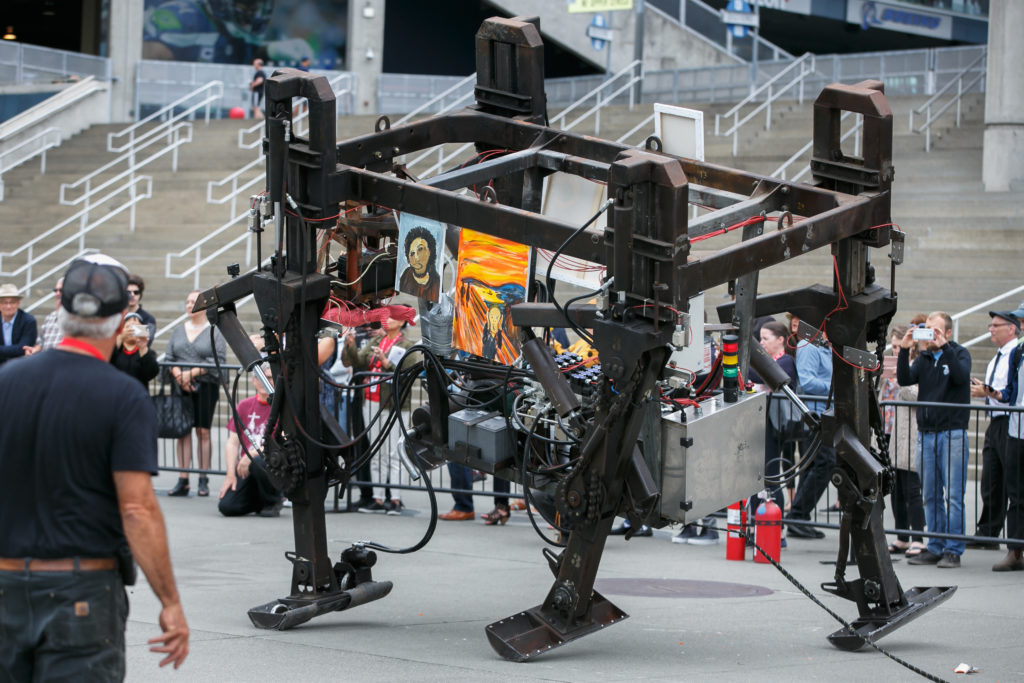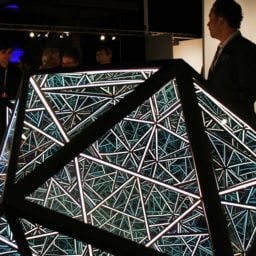The fourth edition of the Seattle Art Fair opened last night with a bang—literally—followed by the loud roar of grinding mechanical gears. The din was part of a performance by hulking, dinosaur-like robots outside the fair’s venue at CenturyLink Field in downtown Seattle.
The performance is the work of artist Mark Pauline, who has been building robots from found materials and staging these kinds of violent, sprawling battles under the name Survival Research Laboratories (SRL) since the late ’70s. But only recently, and somewhat reluctantly, has he begun to do so in a fine-art context.
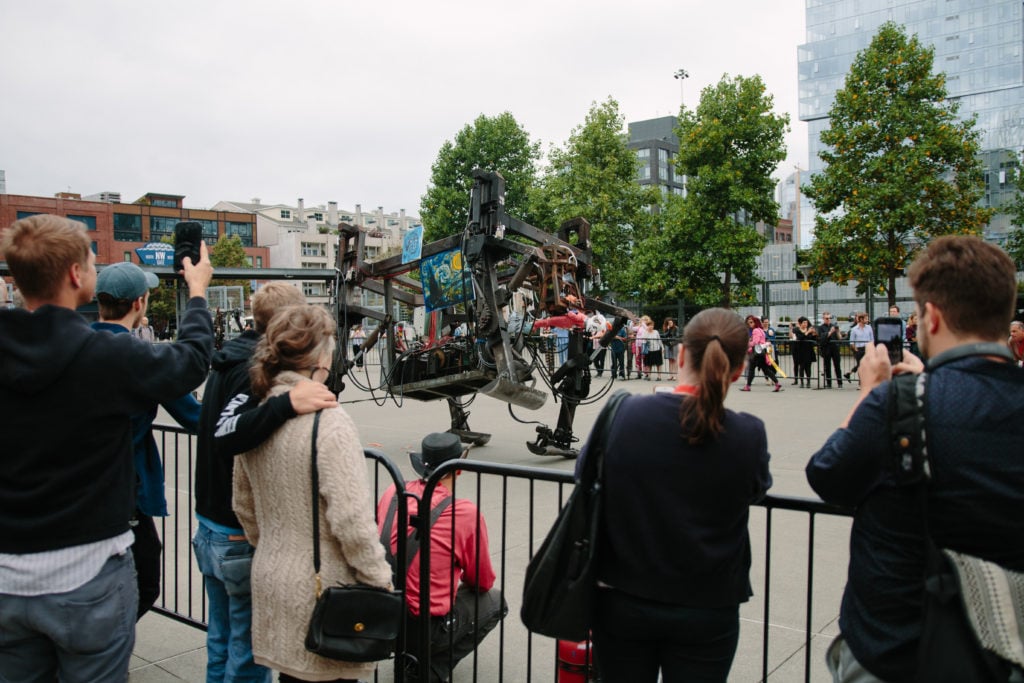
Mark Pauline’s performance. Courtesy of the Seattle Art Fair.
SRL, which describes its specialty as “dangerous and disturbing mechanical productions since 1979,” began working with Marlborough Contemporary gallery in Chelsea earlier this year. More recently, Pauline and his assistants accepted an invitation from the Seattle fair’s energetic new artistic director and former Creative Time head Nato Thompson to bring its show to the Pacific Northwest.
Inside a makeshift Colosseum in the form of a circle of metal barricades, three of Pauline’s fantastical creations—delightfully named Rotary Jaws, Running Machine, and Big Walker—romped, circled one another, and sparred. They picked up random objects ranging from mannequin heads to raw salmon fillets to canvases painted in the style of Andy Warhol, Edvard Munch, and Jean-Michel Basquiat (plus a copy of the infamous “Beast Jesus”).
As nearby teams of assistants monitored the action with remote controls, the robots’ violent clashes sometimes sent debris flying into the air. The demonstration culminated with a particularly brutal destruction of a faux silkscreen from Warhol’s “Flowers” series. The artistry seems to come from the lack of precision and raw imperfection of the robots’ actions. (Sometimes, assistants would step in to assist when they failed to pick up an object.)
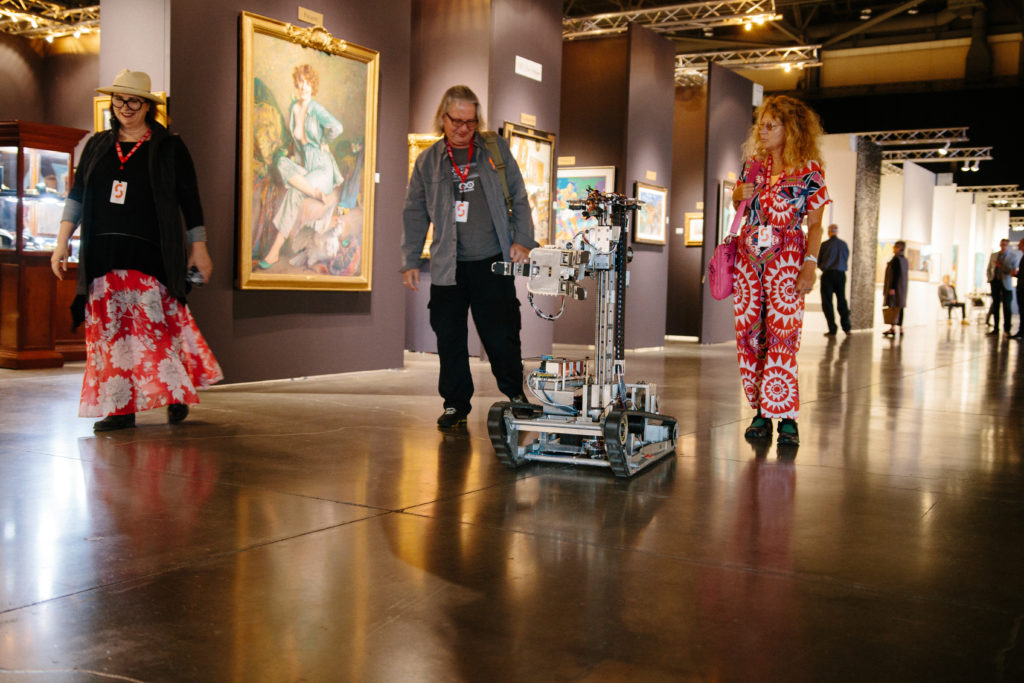
Inside the Seattle Art Fair. Photo courtesy of the Seattle Art Fair.
Pauline’s presence extended inside the fair with a dynamic—but far more polite—robot that rolled around the aisles, sidling up to visitors and sometimes extending an arm to offer a rudimentary handshake.
Like this one, most of the fair’s special projects reflect Thompson’s interest in merging art and tech in a way that feels generative rather than gimmicky. (This is fitting for a fair that has been backed by art collector and Microsoft co-founder Paul Allen.)
Rather than celebrate the Utopian potential of technology, the projects offer up a kind of ambivalence about a fully wired world. Inside the fair, Trevor Paglen’s Orbital Reflector, made of mylar, aluminum, solar panels, and tape, soars high overhead like an intimidating beacon.
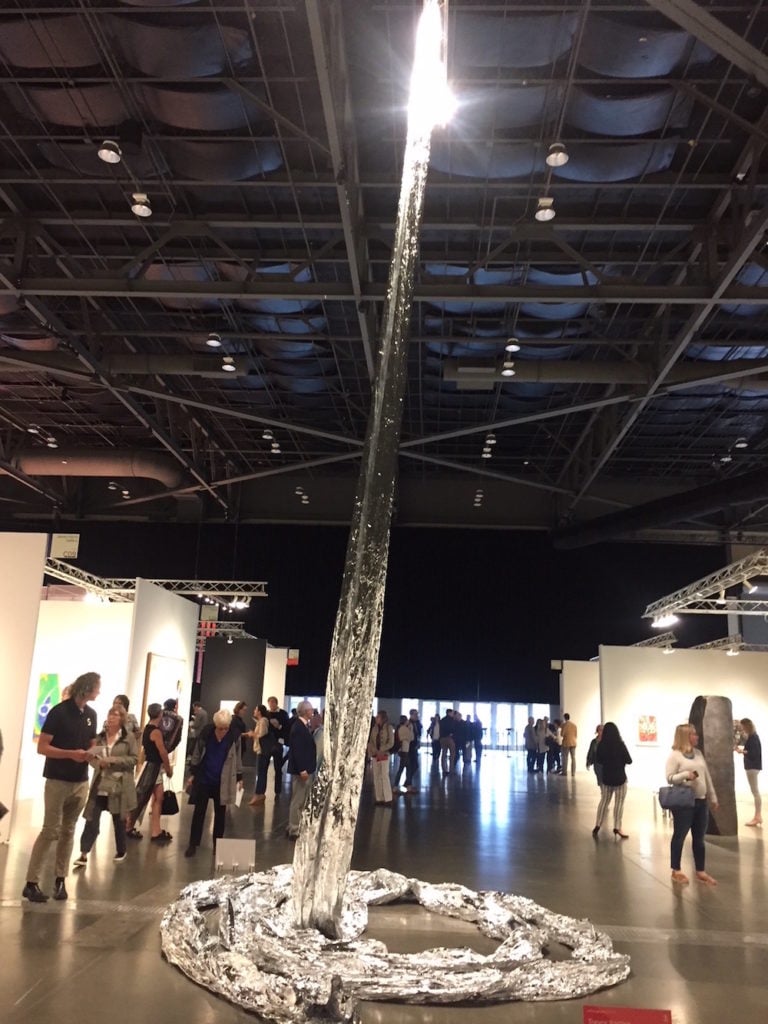
Trevor Paglen, Orbital Reflector Photo by Eileen Kinsella
Elsewhere, artist Heather Dewey-Hagborg presents her haunting project Probably Chelsea, which consists of 30 different potential portraits of Chelsea Manning, the US Army intelligence analyst-turned-whistle-blower, generated angorithmically through an analysis of her DNA. (None of them look particularly like her, another disquieting gesture toward the subjectivity of science and tech.) The 3-D-printed sculptures suspended in midair by filament were a main attraction during the VIP preview.
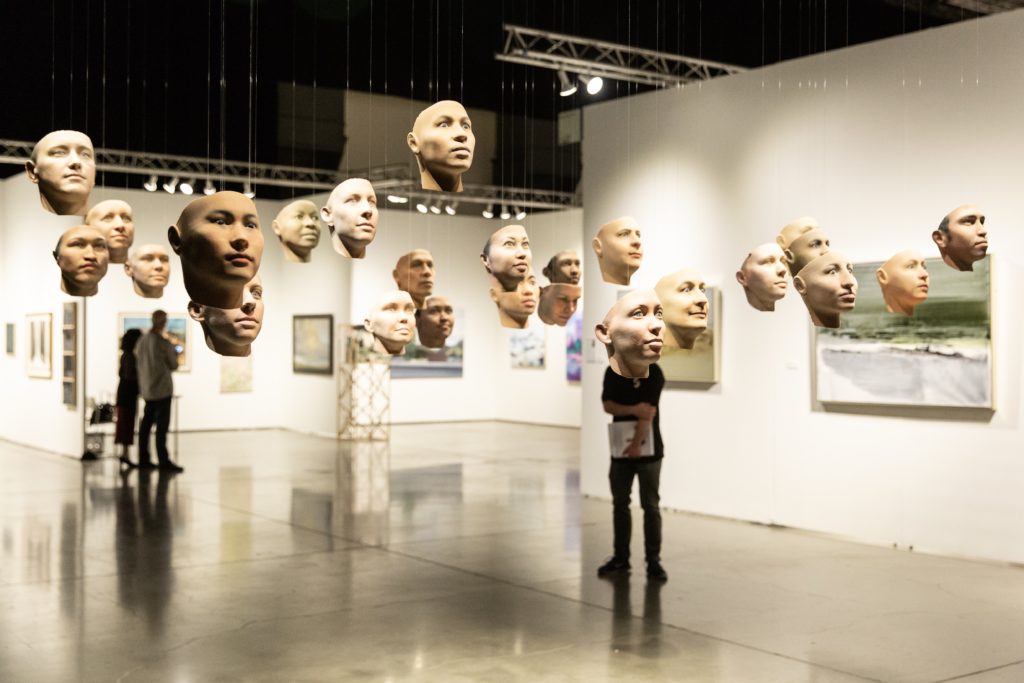
Heather Dewey-Hagborg’s Probably Chelsea at the Seattle Art Fair. Photo courtesy of the Seattle Art Fair.
In addition to the cutting-edge special projects, however, there was plenty of more traditional fine art on view in the booths, ranging from Impressionist, Modern, and postwar works to contemporary painting and photography.
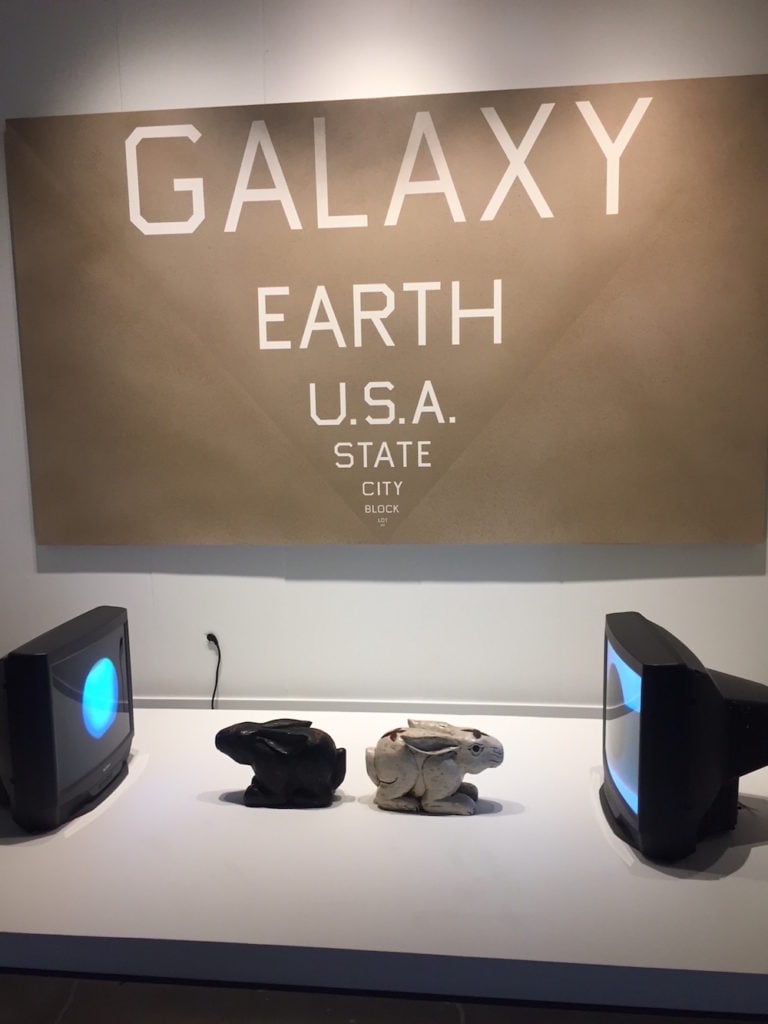
Installation view of Chris Burden at Gagosian Gallery booth, Seattle Art Fair. Photo by Eileen Kinsella.
Meanwhile, the fair’s art-meets-tech programming extends well beyond the confines of the convention center. Gagosian is teaming up with local businesses and the Seattle Art Museum to present Chris Burden’s Scale Model of the Solar System (1983).
The work begins at Gagosian’s booth, where a model of the sun hangs from the ceiling. Every other planet in the solar system (including Pluto, which was still considered a planet back when Burden created the work in 1983) is arranged proportionally throughout the city based on the real distance between the planets in the solar system. Look out for Neptune at the vintage boutique Diva Dolls.
The Seattle Art Fair is open until August 5 at the CenturyLink Field Event Center in Seattle. Live demonstrations of Mark Pauline’s Survival Research Laboratory continue with performances on Friday at 5:30 p.m., Saturday at 2:30 p.m., and Sunday at 2:30 p.m.
